As an Amazon Associate I earn from qualifying purchases.
If you want to learn one duck leg recipe, this is it. Easy roast duck legs, and when I say easy, I mean so easy it’s barely cooking.
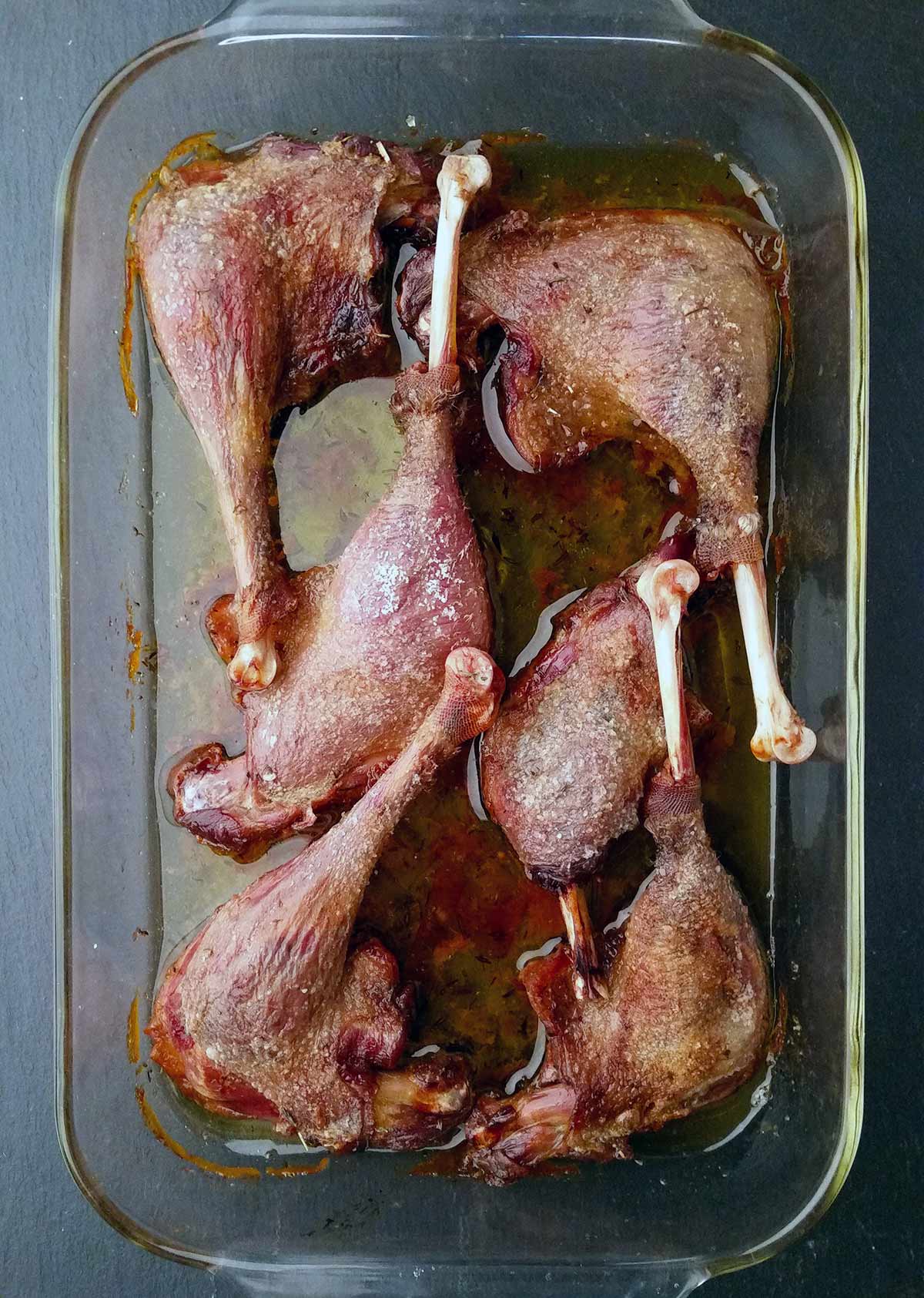
This duck leg recipe is intended to get you close to the luxury that is confit: tender, melt-in-your-mouth meat with crispy skin. It will work with all store-bought duck legs, as well as with wild ducks and especially wild geese.
I love duck confit, but it can be a project. These easy roast duck legs are very much like it, but it’s a far easier way to roast duck legs than traditional confit, which requires salt and time.
Confit, pronounced “con-fee,” is a French method of preserving meats by salting them down to remove moisture and then cooking very slowly in their own fat. It’s wonderful stuff, and I have a recipe for duck confit here. Why is it wonderful? because you get meltingly tender meat topped with cracker-crispy skin. It’s salty, meaty, easy to eat with a bonus of crisp — and humans are hard-wired to like crisp.
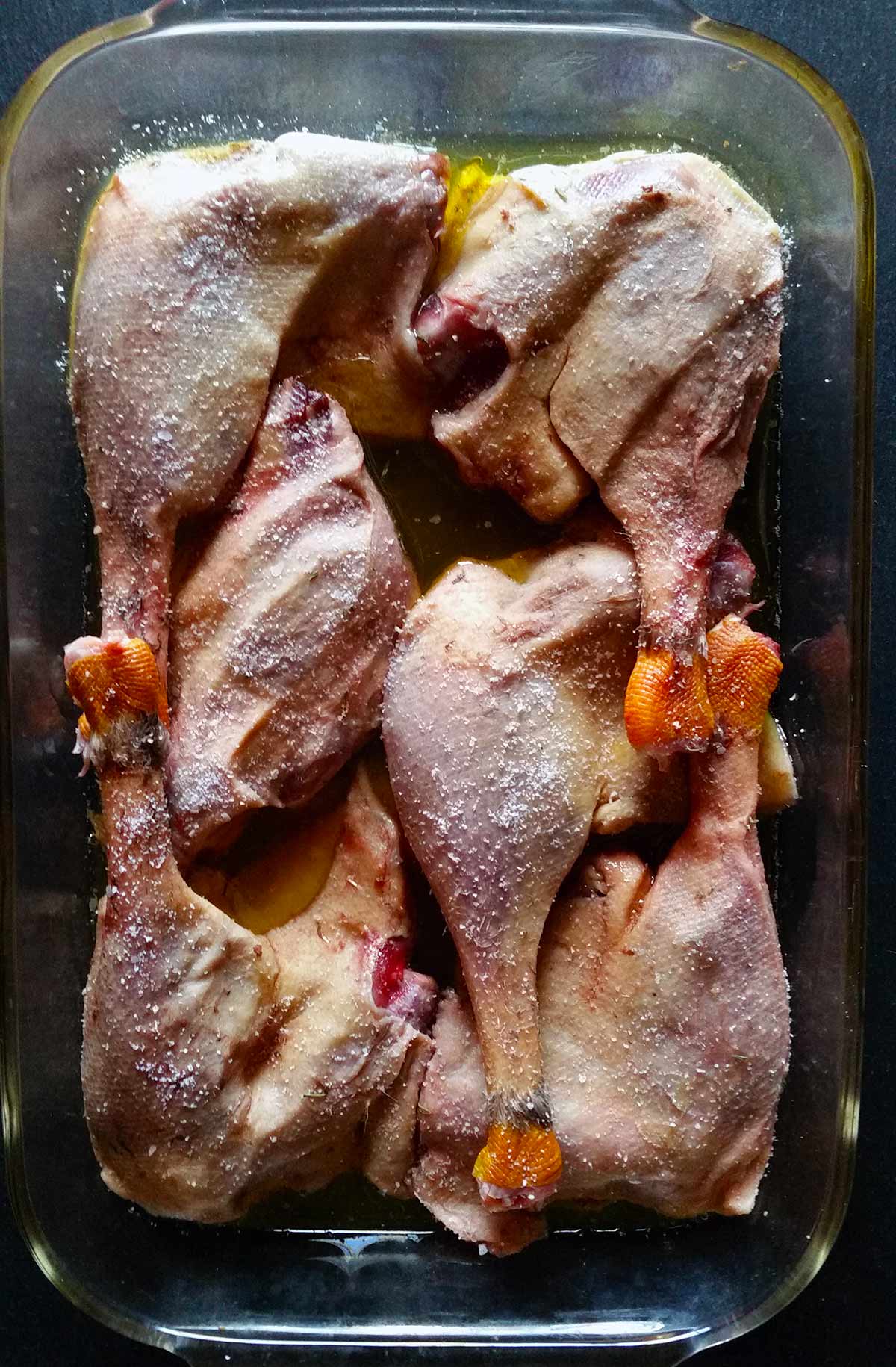
This method will get you close to the original, and it will take you a fraction of the time. The trick is to roast the legs in fat, in a small container that will just barely hold however many legs you happen to be cooking. This, more or less, will ensure that your legs are cooking in a bath of fat, not in the hot, dry air which will desiccate a wild duck or goose leg.
I used the legs from specklebelly geese in these pictures, and I recommend them highly. Canada geese, snow geese, and the legs from big ducks like mallards, canvasbacks, pintails etc. are also good choices, and of course you can do this with store-bought ducks and geese.
You want the skin on them, however. If, for some reason you have skinless legs, you will need to totally submerge them in the fat — and skip the crisping part in Step 3 of the recipe below. Snow goose legs cooked this way, then shredded, are amazing.
Try this duck leg recipe the next time you come across duck legs in the market, or have a good day duck or goose hunting. You will not be sad.
What do you do with your duck legs once they’re cooked? Eat them as is. So damn good. Crispy skin, meltingly tender meat, all they need is a bit of citrus or vinegar to balance them out.
Or you can shred the meat and put it into pasta or a salad, or in a tortilla, or in a sandwich like pulled pork BBQ. It’s incredibly versatile.
Easy Roast Duck Legs
Ingredients
- 2 to 3 pounds duck legs (or goose legs)
- Salt
- Duck fat, butter or lard
Instructions
- Pat the duck or goose legs dry with paper towels. If you have store-bought duck legs, prick the skin of the duck all over with a needle or the point of a sharp knife. Do not pierce the meat itself. Piercing the skin gives the fat a place to seep out. Salt your duck legs well and set them aside, skin side up. Let them come to room temperature for at least 30 minutes and up to 90 minutes.
- Put the legs in a small casserole. How small? You want the casserole to be just big enough to hold the legs. Now you need some fat. If the legs themselves are fatty, you will only need to pour a thin sheen of oil or melted duck fat on the bottom of the casserole, then place the duck legs close together, but not overlapping. If the legs are skinny, add enough fat to come about 1/4 inch up the sides of the dish.
- Put the casserole in the oven and turn it to 300°F; if you have a digital oven, you could even go down to 285°F. Do not preheat the oven. Every duck has a different level of fat, so doneness is more an art than a science. But it will take at least 90 minutes, and probably two hours, and even 3 or 4 hours won't hurt them. After 90 minutes, check the duck: It should be partly submerged in melted fat and the skin should be getting crispy.
- When the skin is starting to look crispy, turn the heat to 375°F. Check after 15 minutes. You’re looking for a light golden brown. Remove the casserole from the oven and let cool for 10 to 15 minutes before eating. Save the accumulated fat for cooking vegetables, other meats or for keeping your skin shiny. I strain the fat through a paper towel, but you really only need to do this if you are saving the fat for several weeks or months; strained, it will keep for 6 months tightly covered in the fridge. Well wrapped, the duck meat itself will last up to 2 weeks in the fridge.
Notes
Keys to Success
- You need the meat to swim in fat. It won't work otherwise. If the notion of that much fat frightens you, you can use chicken or duck stock in a pinch. Not as good, but it will keep the legs from drying out.
- Once made, any of the sauces on this page will work well with your duck legs. Or go simple with black pepper and citrus.
- Your duck legs will keep a week in the fridge, and freeze well.
- To reheat, set them under a broiler or toasted oven to re-crisp the skin. The meat is perfectly good at room temperature, so you'll only really want to get that skin nice again. No need to overcook the legs on reheating.
Nutrition
Nutrition information is automatically calculated, so should only be used as an approximation.


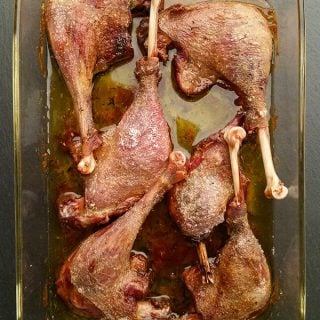
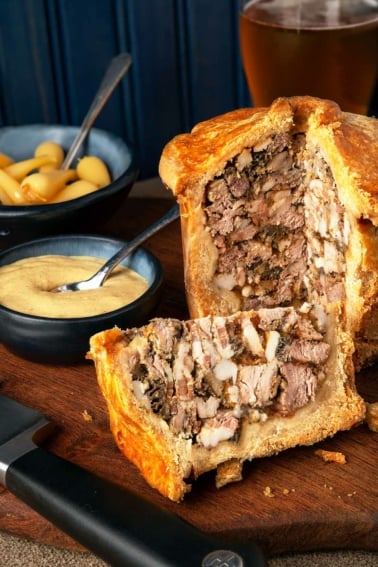
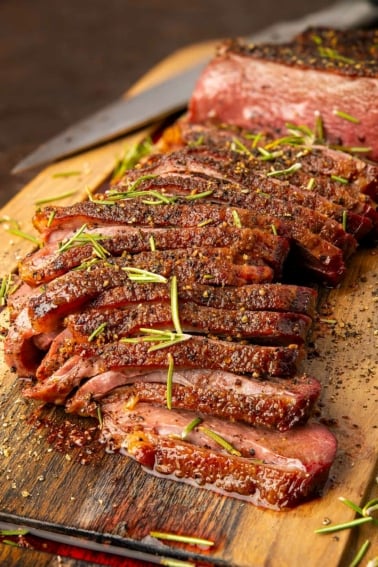
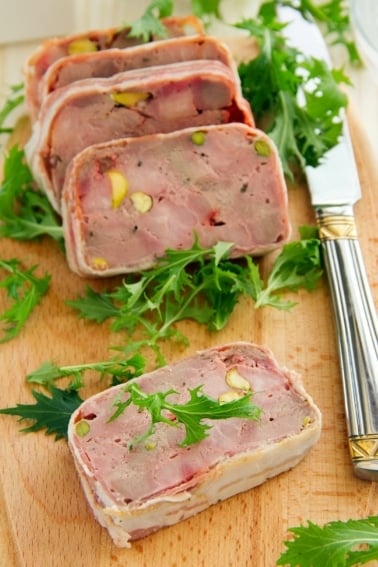
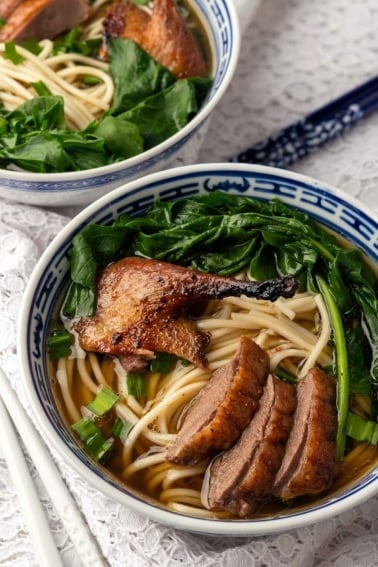
Easy peasy and delicious.
Made this recipe last weekend with some Mallards I had gotten the week prior. AMAZING!
Hey Hank, Just came across your recipe and super eager to try it! I wondered whether I could cook it ahead of time then reheat it when guests arrive. Could you pls share some advice. Thanks!
Rana: Absolutely. This will reheat very well. Just do so uncovered, so the skin can re-crisp.
Super easy and delicious
Last week we decided we wanted Duck for Saturday Supper. Imagine our disappointment when we got to the market and could only find leg quarters, but we wanted duck so quarters it had to be. I scoured my usual haunts for recipes and they all seemed just too hot (400) and too long (2+ hrs). Enter Hank Shaw. This is hands down the best recipe for duck legs. The skin was perfectly rendered and crispy, and the meat tender and juicy. Best of all, now I have enough rendered duck fat to make flour tortillas. Thank You, Mr. Shaw!
When you put the casserole in the oven, do you put the lid on it? I cooked a whole duck at Christmas and it made such a mess in my oven that I don’t want the legs to do the same thing.
Kathryn: Nope, no lid.
Thanks, I took a guess and didn’t use the lid because your photo showed an open 9×13 glass pan. They just finished and look great, can’t wait to eat them.
will this work cooking a quartered duck
Would this work if you didn’t have skin on the legs?
Amanda: yes, but it won’t be as good.
I’m making this recipe for the second time tonight. I’ve recently moved to Oslo, Norway where there is always fresh (farm-raised) duck in our grocery store. Whole birds are always the most economical, but when you just want parts the legs are considerably cheaper than the breasts. This recipe is absolutely fantastic, and I enjoy these duck legs as much as any duck confit I’ve had in Paris. And all that duck fat left over for potatoes! As an added bonus, my husband is not particularly fond of duck, but actually exclaimed “wow!” when he tasted the result of this method. Thanks for your excellent recipes Hank.
This is the best recipe for duck!! And we find the legs so much tastier than the breast,, although seared duck breast cooked rare is a nice treat sometimes too 🙂
Great recipe – tasty and easy.
For Persian New Year (Nowruz) on March 21, I’m planning to make a walnut-pomegranate stew called Fesenjan. I’ve always made it with chicken but an Iranian friend says that, traditionally, it was made with duck. Your method should work well. I’ll make the stew first and then add the cooked duck thighs and legs to meld the flavors for the last 30 minutes. I bet it will be delicious.
Trying this recipe tonight. we found some duck legs at our local grocers and found your recipe. fingers crossed XXXX
Holy moly this is unbelievably tasty and easy to execute. We were lucky enough to get a handful of drake mallards in CA this last season and we prepared most of the legs using this recipe. We also combined this with one of your other recipes, glazing the skin with honey sriracha and lime. I was almost upset with how quickly our guests devoured these legs, subsequently leaving me with less delicious legs than I had selfishly hoped for. Thanks for the recipe Hank!!
Whoever called that fat liquid gold is so right. And that crispy skin… I nearly burned my fingers and tongue trying to get a taste! Definitely a keeper recipe
NS
We used this recipe for trying out our domestic goose meat for the first time. Wanted something that would highlight the flavor of the meat without much distraction, and this was easy and perfect. It was super flavorful and all I added was salt and some extra fat!
I made it. Recipe is very easy.
I’ve always been intimidated by confit recipes, but this semi-cheat takes the cake. Our lardtubs of domestic waterfowl have more than enough fat to swim in by the end of the cooking time. Perfect, moist meat with crispy skin. And reusing that liquid gold afterwards is a must.
My mom used to make simpler versions of time-consuming dishes like lasagna and pierogi by simply subbing some ingredients and mixing them all in one pan. Those dishes always had the prefix “lazy man’s” as in “Lazy-Man’s Lasagana’ So, dude. . . you made Lazy-Man’s Confit!
This is just another case for getting as much out of a carcass as possible.
What do you mean balance out with citrus or vinegar. ? You don’t mention this again in the steps of the recipe.
Steve: I mean add it to taste.
The chef at “Hot Tails” restaurant in New Roads La., (just a few miles north of Baton Rouge on the shores of the Mississippi), takes this a step further and then deep fries the legs in a Corn Flake batter and serves them with both a spicy remoulade and a pepper jelly. They are dubbed, “Cajun Buffalo Wings”, even though he only uses the drumettes. Best thing I’ve stuck in my mouth all year!!!
Hank that looks awesome. We raise our own meat chickens, could I do this with leg quarters?
Justin: Absolutely.